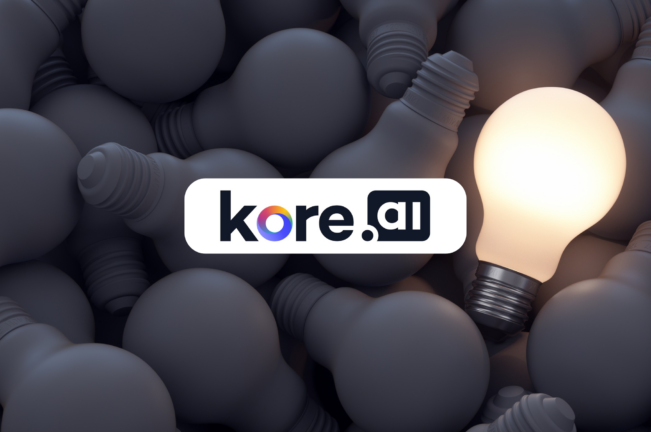If you play a role in running a business, you know how important contact centers are in shaping the overall experience your company provides its customers. You likely also are well aware of how difficult it is nowadays to keep contact centers adequately staffed with people capable of delivering the caliber of experience you and your customers expect.
The labor shortfall and customer experience (CX) problem is especially acute in industries like healthcare. One large healthcare organization, the Patient Access Collaborative, reported a contact center turnover of more than 25% annually among its members. This level of employee churn is bound to negatively impact customer experiences.
The contact center staffing challenge isn’t unique to healthcare. Businesses in plenty of other industries are seeing their CX suffer due to high contact center employee attrition. But a viable solution to the problem is at hand, embedded within the capabilities of today’s contact center as a service (CCaaS) offerings. Artificial intelligence (AI) and machine learning (ML), with their ability to enrich interactions, empower agents, automate processes and generally enable contact centers to do more with less, are giving organizations a distinct competitive edge by bolstering CX and helping to insulate them from staffing shortages.
In fact, AI and ML capabilities are a big reason CCaaS is gaining appeal as a scalable, cloud-based alternative to more labor-dependent, self-managed contact centers. CCaaS essentially is a managed service that connects and integrates all customer touchpoints (voice, website, mobile app, etc.) and preserves the context of each customer interaction across channels, resulting in a seamless overall journey.
Let’s look at some of the areas where AI-driven CCaaS capabilities are proving particularly valuable to organizations.
1. Empowering agents with relevant information and resources so they can better assist customers faster
Issue resolution becomes a much more straightforward proposition for agents when, rather than consistently having to search across various systems for relevant information to answer customer questions or address their issues, they have a single AI-driven system to provide them with fresh data on that specific customer (the history of their interactions across all channels, the products/services they use, etc.).
At the same time, and in real time, the tool is also listening to customer interactions, and feeding agents with relevant resources and information, along with recommendations for follow-up questions and best next actions, all in the moment.
This creates a positive experiential loop, where agents are more productive and feel more engaged in their work, which in turn enables a contact center to increase its caseload capacity and resolution rate. It should come as no surprise that the result of all this coordinated automation is an overall better (or improved) CX.
2. Freeing agents to focus on the interactions that really move the needle
The buzz around AI tools like ChatGPT and chatbots in general is warranted for their ability to relieve contact center agents of repetitive, mundane tasks so they can focus on aspects of their work that really add value, such as in triaging more complex customer interactions and augmenting customer journeys with a higher, human touch.
A ChatGPT-type platform can step in and perform much of the time-consuming post-call work that typically falls to agents, such as summarizing interactions and applying disposition codes.
Instead, the agent simply reviews what the chatbot has produced, then hits “submit” if it’s correct. Other areas for agents to apply AI and ML include auto-routing of simple inquiries to chatbots, along with increased self-service capabilities for customers.
3. A shorter learning curve with targeted training and more performance
The learning curve for new agents becomes significantly easier to climb when AI tools are arming them with relevant documents and information and prompting them with questions to ask in real time based on what they’re hearing during customer interactions. Yes, agents still need training. But now that training can focus on areas with the most impact on CX.
4. Providing customers with more nuanced, highly personalized support wherever they are within their journey
Today’s consumers expect smooth, natural conversations and interactions that can jump between text, chat, and email without missing a beat. They don’t want to waste time backtracking or repeating themselves during the journey. And regardless of the touchpoint, they expect agents to know them in a nuanced way: preferences, past interactions, and buying history with the company.
With AI tools that are integrated with an organization’s CRM system, all that lives at the agent’s fingertips, enabling them to cater to the customer’s preferences. This particular customer always presses ‘0’ to speak to a human when they contact your organization. AI can skip intermediate steps and automatically route that customer’s incoming calls to a live agent, for example.
5. Managing workforce needs better with predictive capabilities
Today’s labor shortage demands that organizations find new ways to maximize their workforce. AI can help by analyzing historical contact center data to identify patterns in demand and make scheduling recommendations to contact center managers.
6. Improving contact center quality management
Instead of contact center supervisors and their teams having to review and analyze a high volume of recorded calls to evaluate agents, given the right parameters, AI can perform those duties automatically in a small fraction of the time. AI-powered analytics also can help supervisors identify trends in customer queries and overall contact center quality.
By equipping themselves with AI capabilities like these, organizations can counter the high customer abandonment rates, lost sales, customer churn, and labor shortfalls that plague so many contact center operations, and instead deliver a consistently superior customer experience.
Austin Herrington is vice president of enterprise voice product management & product development for managed network provider Windstream Enterprise. He oversees Windstream’s enterprise UCaaS and Voice product strategy and roadmap.









